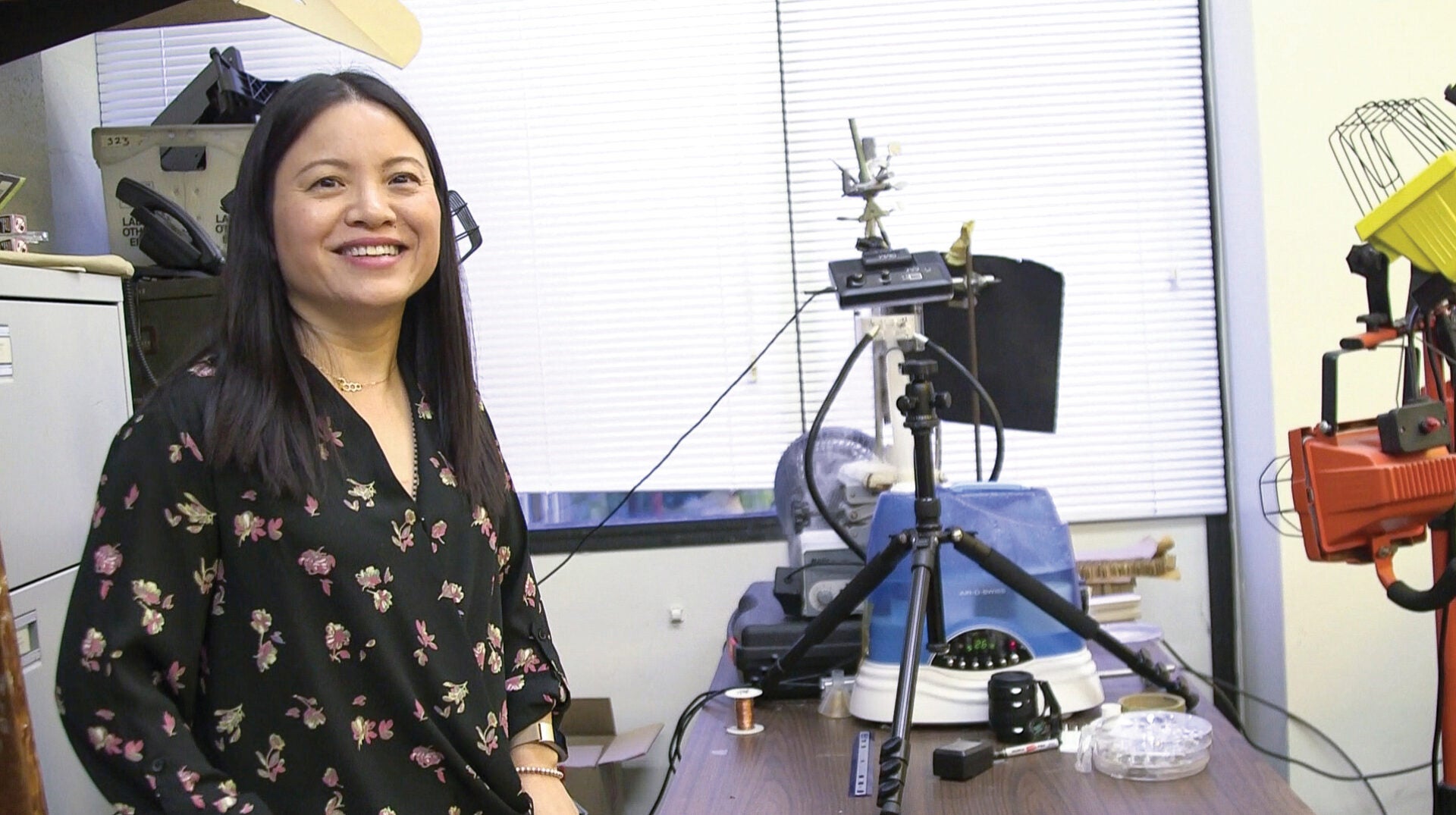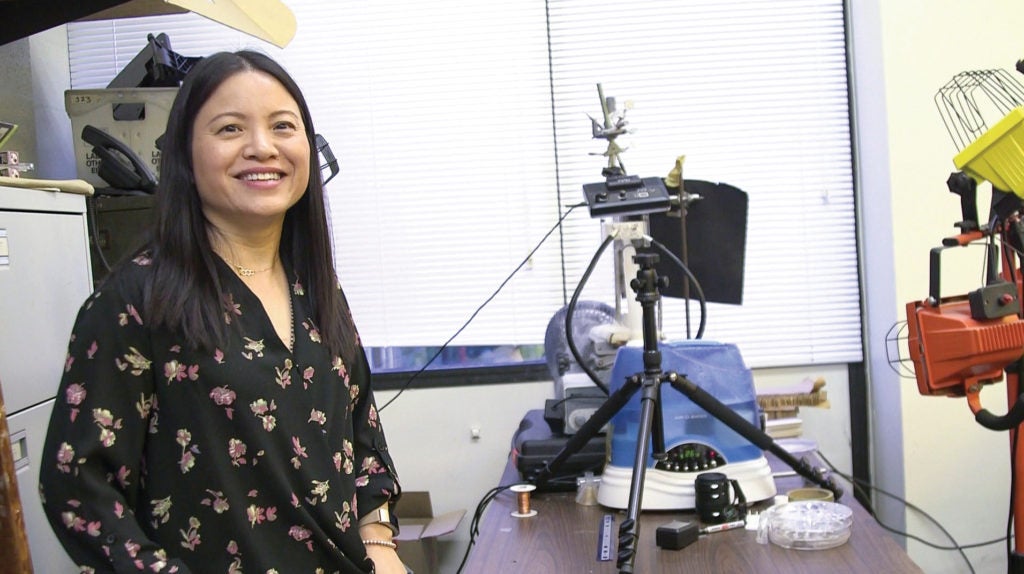
Reducing Energy Use with Building Skins
In the heavily regulated building sector, innovative materials face a major disadvantage: building codes. For this reason, and because climate change can’t wait, Shu Yang is using approved materials in new ways to bring her self-cooling building skins to market.
Professor Shu Yang is motivated by having an impact. Originally focused on studying nanomaterials, she recalls attending a meeting at the Kleinman Center for Energy Policy about ways buildings could be more efficient and thinking: “This is my passion. I want to hear from other people what their problems or needs are, and then I can say, ‘How can I help?’”
Yang’s current research focuses on modulating solar gain through windows and other glass facades. When multiplied over the billions of buildings that could potentially benefit, her work has great scale.

Yang, and her collaborator, Professor William Braham (Stuart Weitzman School of Design), sought to create a “responsive facade”—a passive building envelope that responds to outside temperature and light without human intervention. Yang’s approach is deeply influenced by observing the natural world. Whether looking at butterflies or a flower, Yang has always wondered, “Why do they have this particular coloring? Why do they behave this way? It’s about the habitat.” She notes how nature often comes up with the smartest approach to solving its own problems. Nature’s cells are hexagons, for example, because this is the densest packing shape.
While so many aspects of the natural world work in concert, most man-made buildings fight against nature.Yang sought to develop a product that better coordinates building and nature. Her responsive facade features a shade that has a motor connected to a bucket of water on the outside of the building. The bucket collects water vapor overnight, drawing the shades up. When the water evaporates throughout the day in response to heat and sunlight, the bucket becomes lighter, allowing the shade to drop down. “You want to be informed by biological systems but you don’t want to copy them.”
The shade’s impact on the space is made more complex by its kirigami design. A variation of origami paper folding, kirigami is a Japanese style of cutting or folding paper to develop a pattern or design. While the kirigami technique is traditionally used to create art, here the technique is used to alter how light penetrates a window shade. “By cutting out a design, you can let the light in,” Yang says. The cuts also allow a shade to be more flexible and stretch. “The question then is how can we make it responsive to temperature and light? And how much heat do you generate when you open or close the shade?” When you open a shade, it lets in light, infrared rays, and unwanted heat; when you close it, it blocks those elements.
Trained as a material scientist, Yang is working with Braham to study the shade’s movements and consequences for a building’s energy use. Slight changes to the kirigami design—such as variations in the shade’s length, width, and geometry, tilted angles of the panels, or coatings—could allow the shade to reflect, absorb, or deflect light and therefore change the building’s energy use.
Their next step is to work with policymakers or practitioners to understand how to implement the materials. Yang is working with materials that are already approved by building code, ensuring that they can be easily used by architects and developers. For Yang, ensuring that her work has real-world consequence is important. “You can do great science, but if nobody is going to adopt it, what is the point?”
While so many aspects of the natural world work in concert, most man-made buildings fight against nature. Yang sought to develop a product that better coordinates building and nature. Her responsive facade features a shade that has a motor connected to a bucket of water on the outside of the building. The bucket collects water vapor overnight, drawing the shades up. When the water evaporates throughout the day in response to heat and sunlight, the bucket becomes lighter, allowing the shade to drop down. “You want to be informed by biological systems but you don’t want to copy them.”
Policy Challenge
The International Code Council sets the standard for electrical, plumbing, and mechanical codes, which are adopted by many countries and across the United States. In the U.S., these I-Codes are either adopted as state or local law. Because governments can add or alter these codes, developing universal solutions across jurisdictions is difficult.
The Numbers
About 40 percent of energy consumed by buildings worldwide is for heating and cooling. The U.S. Energy Information Administration estimates that in 2018, electricity use for cooling the interior of buildings (space cooling) for both residential and commercial was about 377 billion kWh, or about 9 percent of total U.S. electricity consumption in 2018.
Further Reading
You can do great science, but if nobody is going to adopt it, what is the point?
Shu Yang
